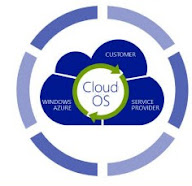360 Degree Classrooms
There are no limits to learning, and the process is never-ending. These days, learning has opened up a new vista that is much beyond anyone's wildest dreams. A virtual learning environment is indeed a new paradigm that allows people to learn from anywhere on the planet. Virtual teaching is also a fantastic option for educators who would like to educate students all over the world.
As the name implies, 360-degree content covers every little detail of a subject. Assume you have a set of eyes hidden behind your ear. As a result, in addition to seeing what's right next to you, you can now see what's going on behind your back. Virtual instruction is a new type of face-to-face instruction.
What's really virtual reality education, and how does it work?
While the terms 360° multimedia and VR technology are used to represent a variety of activities ranging from imaginary spaces to gaming, the use of 360° photos and video in the class focuses on giving students an immersive experience.
360° media, more specifically, refers to actual photos or video that may be viewed on a digital projector, computer, digital projector, tablet, or mobile, with the entire VR experience going from the usage of headsets and cellphones. This is what people are referring to when they talk about Samsung Gear or Google Cardboard .
HOW ARE 360 AND VR VIDEO BEING INTEGRATED INTO EDUCATION? ARE THERE ANY DIFFICULTIES?
Like any new technology, there's a risk that it'll be seen as merely a novelty that's employed for the sake of having fun rather than for a genuine instructional purpose. This can be mitigated by limiting the equipment provided in class. The materials can be rotated by supplying only 5 or 6 kits, allowing space time for thinking and collaboration. This also saves the teacher the trouble of dealing with a class that has 'disappeared inside their headphones.'
Expense is a significant issue. Most schools have had their experiences with a Google Expedition presentation, a VR tool created by Google that enables learners to develop their pupils on immersive virtual travels across the world. Due to the cost and budget constraints, only a few institutions have indeed been able to buy dedicated classroom equipment.
For group projects, a teacher may only offer a single Virtual reality headset with their very own phone. This presents a number of problems, such as how to keep others going through this process and busy while one group uses the headset.
How to Inspire Inquiry with Immersive Technology
While awareness of and access to 360-degree information is growing, best practices for using this tech as a learning aid are still developing. 360-degree technology is primed to become the next abandoned toy, or worse, a diversion from learning, if it is not integrated into best classroom practices surrounding inquiry. Here are three inquiry strategies that can be used to 360-degree technology.
Question Formulation Technique(QFT):
As the anchor for the students many used the 360-degree content. Students worked in four-person groups to examine 360-degree Google Street View photographs and Youtube clips at their own speed and with their own interests. Students collaborated to construct questions utilising the QFT after their own investigation aroused their interest.
Look, Think, and Wonder:
With 360-degree technology, this visual thinking technique from Project Zero works wonderfully. While using The Ny Times' virtual reality excursion you can divide students into couples and have them share one gadget and viewer. One student watches the film (which lasts about 4.5 minutes) and orally explains what they saw. This information is recorded by the other partner.
The students then reverse places, with the spectator sharing only new items they notice in the second round. Students work together to form judgments (Think) and generate new questions based on their pooled observations ). This thought practice, I discovered, helped the students concentrate their investigation and interact with the film in a much more nuanced way.
Student Investigators:
When utilising Google Expeditions, I present students with three to five statements and encourage them to acquire evidence to support or disprove the allegations. You may select what 360-degree image pupils see and use shortcut keys to point visitors in a direction for closer inspection as the excursion leader. Scenes from many tours of Italy were recently used to help students learn about the Roman Empire's legacy. Students arriving on their own regularly help observable data on the assertions in order to see how Ancient monuments exist in modern life.




Comments
Post a Comment